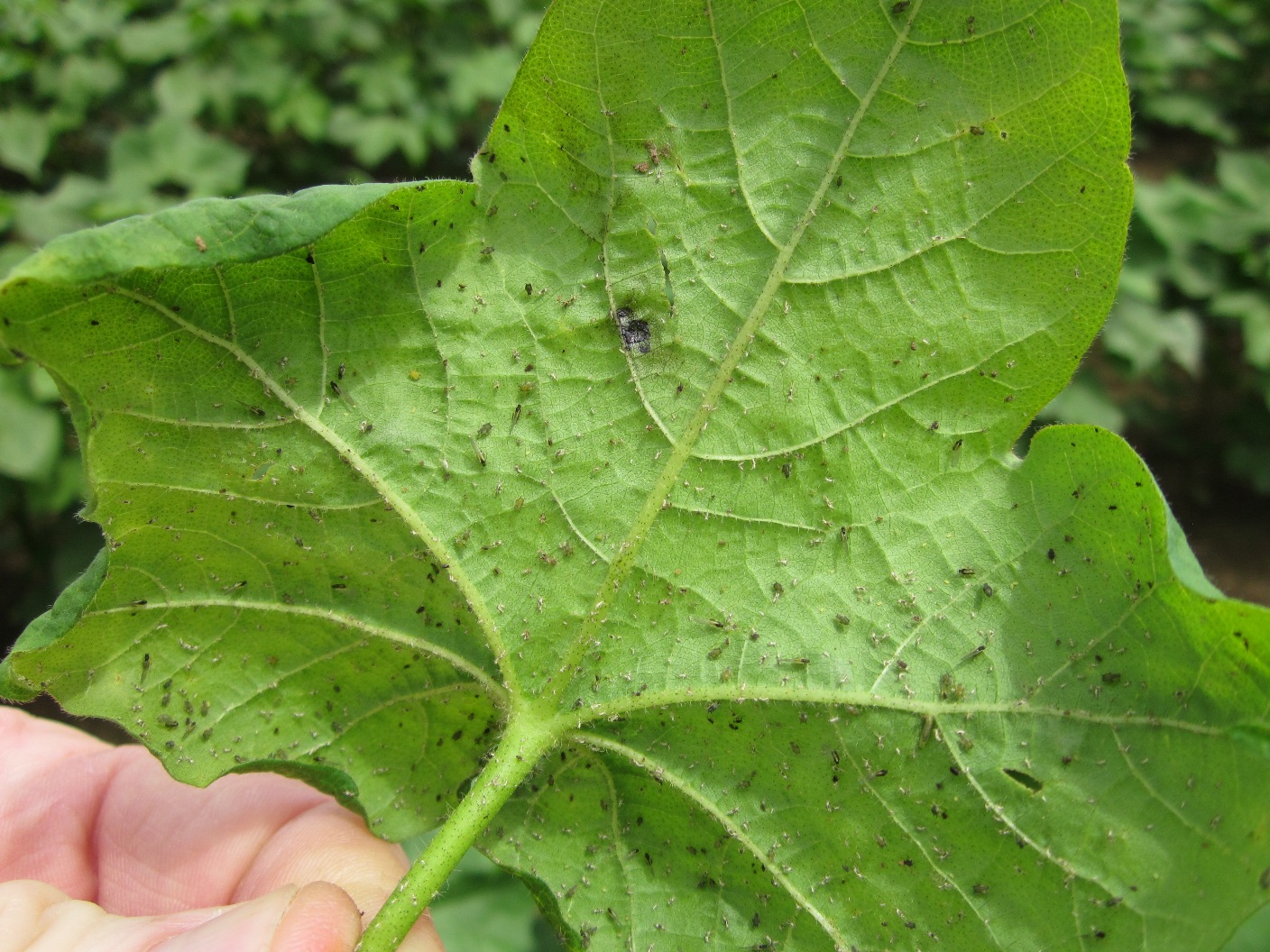
Cotton aphids are beginning to show up in spots in fields. On plant terminals and young leaves feeding may result in distorted growth which may include stunted plants and rolled or downward cupped leaves. When feeding, cotton aphids secrete a sticky honeydew substance which drops onto leaves and other plant parts. A fungus then grows in the sugars in the honeydew resulting in a black sooty mold growth on the plant.

During most years we can expect aphid populations to build during late June through early July and eventually crash due to a naturally occurring fungus. Gray fuzzy aphid cadavers on the bottom of leaves are indicative of this naturally occurring fungus. Once the fungus is detected in a field we would expect the aphid population to crash in about a week, especially if high humidity conditions exist. Insecticide treatments may be necessary if heavy aphid infestations develop and the beneficial fungus is not detected.
For more information on this cotton pest, please see the following publications:
15.00
15.00
Arkansas Cotton Aphid Threshold Putting Beneficial Insects
Normal
0
false
false
false
EN-US
X-NONE
X-NONE
/* Style Definitions */
table.MsoNormalTable
{mso-style-name:”Table Normal”;
mso-tstyle-rowband-size:0;
mso-tstyle-colband-size:0;
mso-style-noshow:yes;
mso-style-priority:99;
mso-style-parent:””;
mso-padding-alt:0in 5.4pt 0in 5.4pt;
mso-para-margin:0in;
mso-para-margin-bottom:.0001pt;
mso-pagination:widow-orphan;
font-size:11.0pt;
font-family:”Calibri”,”sans-serif”;
mso-ascii-font-family:Calibri;
mso-ascii-theme-font:minor-latin;
mso-hansi-font-family:Calibri;
mso-hansi-theme-font:minor-latin;}
Normal
0
false
false
false
EN-US
X-NONE
X-NONE
/* Style Definitions */
table.MsoNormalTable
{mso-style-name:”Table Normal”;
mso-tstyle-rowband-size:0;
mso-tstyle-colband-size:0;
mso-style-noshow:yes;
mso-style-priority:99;
mso-style-parent:””;
mso-padding-alt:0in 5.4pt 0in 5.4pt;
mso-para-margin:0in;
mso-para-margin-bottom:.0001pt;
mso-pagination:widow-orphan;
font-size:11.0pt;
font-family:”Calibri”,”sans-serif”;
mso-ascii-font-family:Calibri;
mso-ascii-theme-font:minor-latin;
mso-hansi-font-family:Calibri;
mso-hansi-theme-font:minor-latin;}
Melon Aphid or Cotton Aphid, Aphis gossypii Glover (Insecta: Hemiptera: Aphididae)
 0
0
